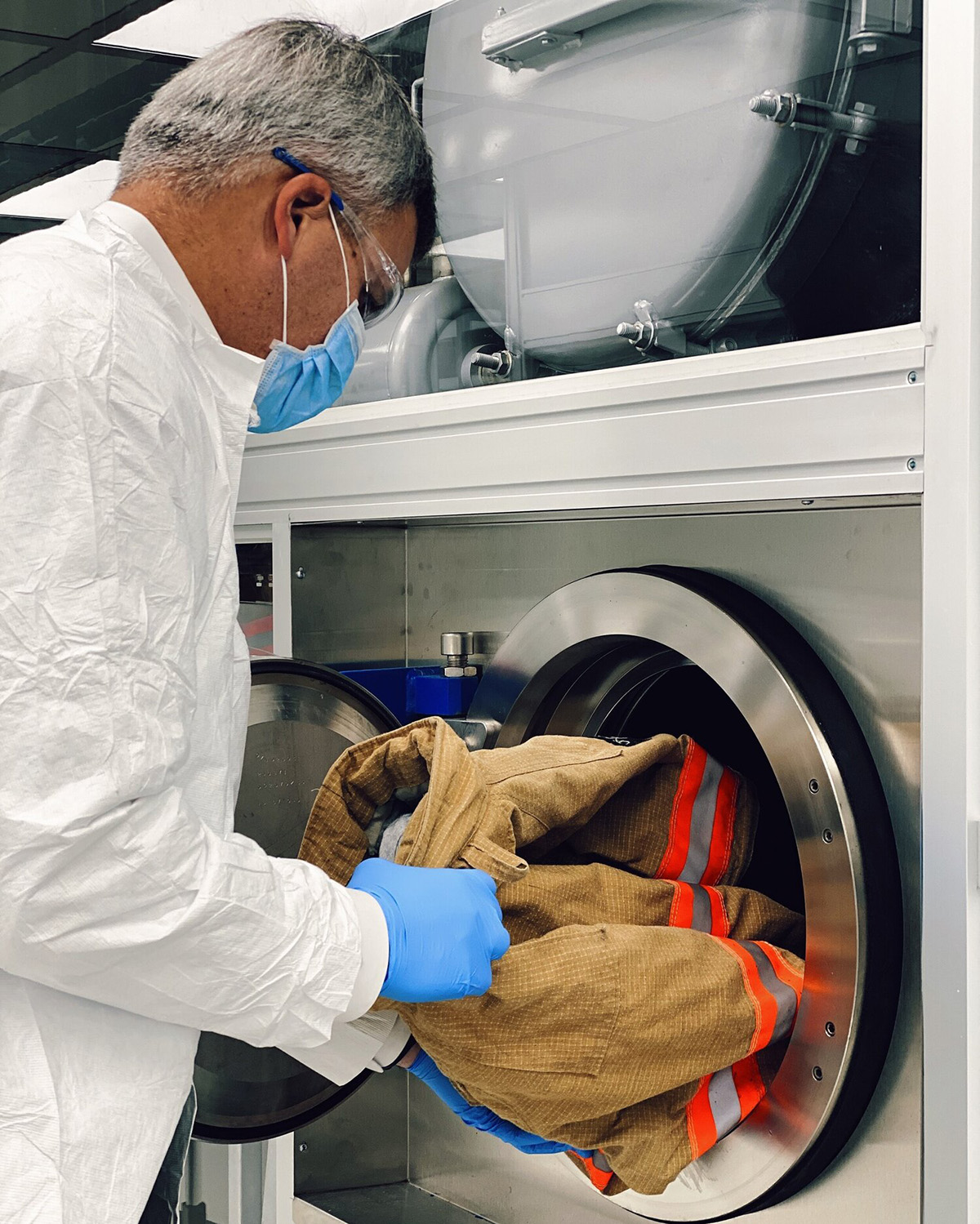By: Emergency Technical Decon Team
PFAS contamination isn’t exclusive to firefighting. For decades, industries such as aerospace, electronics, textiles, and manufacturing have battled PFAS-related challenges—from worker safety to environmental cleanup. As regulatory pressure mounts and scientific understanding deepens, these sectors have become early adopters of new PFAS mitigation technologies and protocols.
Now, as fire departments face their own PFAS reckoning—from turnout gear and firefighting foam to water runoff during gear cleaning—there’s an opportunity to learn from the industries that have been tackling this problem longer. By applying lessons from industrial PFAS removal strategies, departments can enhance firefighter safety, improve cleaning protocols, and prepare for compliance with evolving regulations.
Understanding How Industry Approaches PFAS Removal
Many industrial PFAS remediation efforts have focused on wastewater treatment, chemical filtration, and employee exposure reduction. While fire departments operate in different environments, the goals are strikingly similar: reduce human contact, prevent environmental discharge, and remove the contaminant at the source.
Key industrial strategies include:
Closed-loop decontamination systems
Industries dealing with PFAS, like semiconductor manufacturing and aerospace, have long adopted closed-loop solvent systems to contain and recycle chemicals. Fire departments can apply this concept through systems like ETD’s liquid CO2+ process, which removes 84% of PFAS while capturing and storing all residues in the solution for safe disposal.
High-performance filtration and capture technologies
Facilities in PFAS-intensive sectors often deploy granular activated carbon (GAC), ion exchange resins, or advanced oxidation systems to remove PFAS from water supplies. While these tools aren’t directly transferable to PPE, they highlight the importance of not allowing PFAS to enter wastewater systems at all, reinforcing the need for waterless turnout gear cleaning solutions.
Substitution and exposure reduction
The U.S. Department of Defense and large aerospace contractors have led efforts to replace high-PFAS formulations with safer alternatives where possible, and limit worker exposure through better protective practices and cleaning routines. Fire departments can adopt similar principles by prioritizing PFAS-free gear and emphasizing post-incident decontamination protocols.
What Fire Departments Can Apply
Water alone doesn’t cut it
Just as manufacturers have moved away from water-based PFAS cleanup due to inefficiency and environmental concerns, fire departments should rethink extractor washes as their primary solution. Research shows traditional washing removes only a fraction of PFAS, and can release it into sewer systems.
Adopt containment-first practices
Like other industries, fire agencies must prioritize systems that prevent recontamination and runoff. ETD’s closed-loop liquid CO2+ system not only captures PFAS—it operates without water, preventing chemicals from leaching into local water supplies.
Support proactive policy and purchasing decisions
Aerospace and manufacturing sectors have been successful in influencing procurement guidelines and pushing suppliers to develop safer materials. Fire service leaders can follow suit by supporting PFAS-free gear initiatives and choosing vendors who provide transparent chemical reporting.
Train for the new normal
Just as industrial teams have updated employee protocols around PFAS handling and contamination control, departments need to educate firefighters on the risks of skin absorption, the value of immediate post-incident decon, and the need to clean all gear components, including hoods, gloves, and base layers.
Looking Ahead: A Shared Regulatory Landscape
With the Environmental Protection Agency (EPA) now designating several PFAS chemicals as hazardous substances under CERCLA, all sectors—including public safety—are subject to greater scrutiny. Fire departments must prepare for increased responsibility not just in protecting personnel, but in preventing PFAS from entering the environment.
Fire departments don’t need to start from scratch when it comes to managing PFAS. From containment strategies to closed-loop systems, the industrial world offers a blueprint for how to handle toxic exposure at scale. The key is adapting these best practices to the realities of the fire service—and doing so before PFAS-related regulations and health risks escalate further.
To learn more about how your department can stay ahead of PFAS risks and environmental compliance, contact the ETD team or explore our liquid CO2+ services at etdecon.com.



